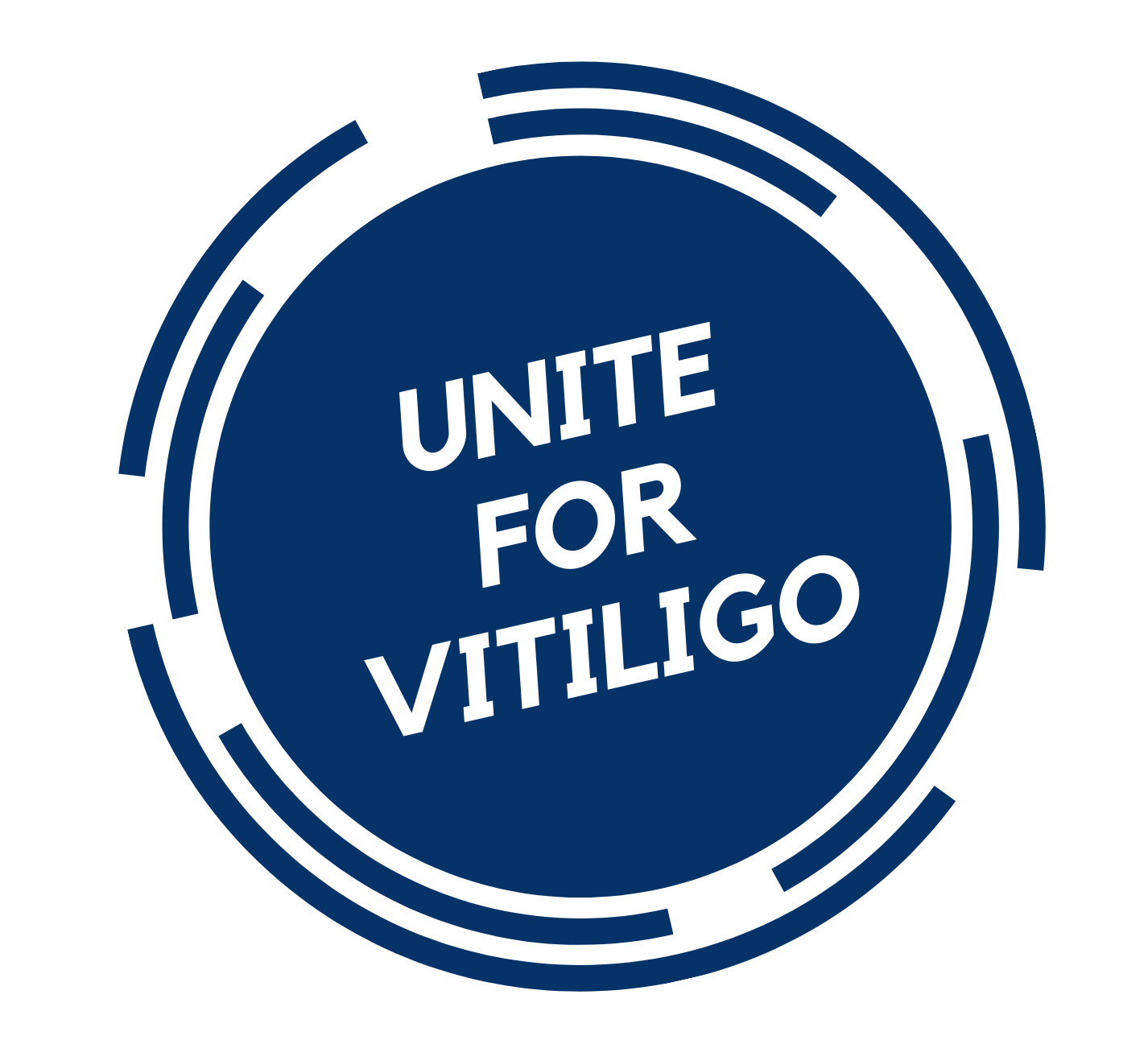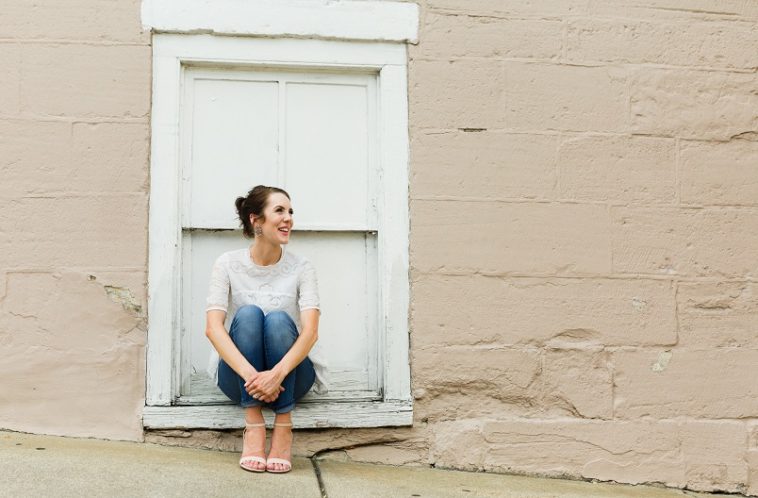In June 2016, the first lifestyle blog for girls with vitiligo was launched. If you have already visited livingdappled.com, you must have noticed that it is a space that does not shy away from talking about the harsher realities of living with vitiligo. Yet, through compelling stories and self-help tips, it proves to be a positive, uplifting web space for girls with vitiligo.
While it’s fair to call it the first lifestyle blog for girls with vitiligo, it’s also worth mentioning that it is run by girls with vitiligo. Erika Page is the founder and editor of this unique initiative.
Growing up with vitiligo, Erika struggled with confidence internally but found the courage to embrace her individuality at the same time. Over the years, conversations with strangers helped her realize that her perspective on living with vitiligo might be unique and she might have a message to share. Looking at online resources for vitiligo, she noticed that most of the blogs around vitiligo were focused solely on treatments. While there was plenty of information on treatments, the conversation about living with vitiligo on a daily basis was missing. That’s how the idea of Living Dappled was hatched.
Today, Living Dappled is a tight-knit community of 4,000 and counting. But Erika feels 77,000+ page visits a year doesn’t count as much as the heartfelt letters of gratitude she receives from the readers around the world.
Now, who wouldn’t be curious to know more about such 29-year-old trailblazer from Virginia? Well, we were. Here is an excerpt of “7 Questions with Erika Page”.
When did you notice your first vitiligo patch (mention age or year)?
My mom first noticed spots on my back at age seven. Her mother, my grandmother, had vitiligo, so she knew what it was but got it officially diagnosed. The spots soon appeared on my knees and elbows and spread rapidly from there. We tried a topical cream as a treatment, but the spots were spreading too quickly for it to be effective and we decided not to pursue treatments any further.
Was it more difficult for you as a child/teen or adult?
Both. I’ve always found the courage to be outwardly confident about my skin, although I struggled internally. In high school, I would cry myself to sleep and believed I didn’t deserve friends – because who would want to be friends with someone who looked like me? By the time I reached college, I had realized that I was the only one holding me back from living my life. However, as I became extremely spotted after college, I reached another phase of extreme struggle and depression. I started having panic attacks, would cry on my floor as I tried to get dressed, and would be anxious about leaving the house because I didn’t know if I could face the stares one more time.
As I became wholly depigmented, I started wearing tanner and felt a sense of freedom for the first time in my life. Because I was largely depigmented with only a few remaining patches of pigmented skin, the tanner looked like my normal skin color. For the first time that I could remember, I could walk down the street without anyone staring at me. I could get dressed and not worry about “covering” any part of my body. I could feel “pretty” as I looked at myself in the mirror. Unfortunately, that feeling drove an addiction to spray tans and tanner – I had never felt this way before and I would do anything to keep it that way. I became incredibly critical of myself and went to great lengths to make sure my tan was “perfect.” A few years later, I’ve made the switch to self-tans and even moved to a lighter shade and I feel “freed” from that sense of addiction. I still don’t like to leave the house without a tanner, but I won’t panic if the tan isn’t “perfect.”
Did you experience bullying? How did you handle it?
Surprisingly, I did not – at least, not that I can remember. From the stories that I’ve heard about kids with vitiligo being bullied, I consider myself blessed. I went to a private Catholic school through eighth grade, so I felt rather protected in the small community there. In high school, although I struggled internally, I was able to laugh about my spots and be confident about vitiligo around other people – perhaps that helped.
Did it take a long time to get used to living with vitiligo?
I’m not sure you ever get used to living with vitiligo. It’s a daily adventure in courage and strength – fighting your own inner negativity while coping with staring eyes and quiet judgment everywhere you go. There hasn’t been a day in my life when I haven’t “struggled” on some level.
How do you feel about having vitiligo now? Do you wish you didn’t have it?
Today I’m 100% naturally depigmented and wear tanner and makeup. To the rest of the world, I look relatively “normal” and you wouldn’t know I have vitiligo unless I tell you. I find it far easier to be one color again compared to being spotted, and yet I still struggle. I wonder if I should be wearing a tanner or if I should just accept this new version of me. I’m more comfortable wearing tanner – happy actually – and yet I wonder if I’m being true to myself.
Psychologically it’s hard to watch your skin completely change colors. And yes, I wish I didn’t have it. I wonder how my life would have been different if I had never had vitiligo. At the same time, I’m thankful that I’ve had the opportunity to turn this disorder into a passion project and support the vitiligo community. I’ve met so many amazing people through this skin disorder and I can’t imagine not knowing them now.
From what we have seen on Instagram, people generally own it and are proud of it, and commonly testify to turning down treatments to change their skin. Do you find this relatable in your case?
Yes and No. My parents and I decided at a young age that I wouldn’t pursue treatments because the vitiligo was just spreading too fast. I’ve never regretted that decision, as much as I’ve struggled with this disorder. And yet, I’ve never been proud of my skin – I’m not sure I ever will be.
To me, “owning” your vitiligo is more about having the courage to live your life to the fullest and stay true to yourself despite your struggles. I think you can “own it” and still struggle with the disorder – and that’s reflective of my life with vitiligo. I would put on a smile – and my shorts – and go through my day smiling at the people who stared even as a I knew I would be crying by the time I got home that night.
Do you feel like people with vitiligo are underrepresented in books, and movies?
Yes, but I’m seeing an increasing trend in including vitiligo models and characters in the media and that’s exciting. Beauty is being redefined in today’s culture and as a result, messages of diversity and inclusion are being more prominent. That’s so important for the vitiligo community as “acceptance” in today’s culture will not only raise awareness about vitiligo but make it easier for those with the skin disorder to live with it day to day.
Erika is a full-time strategist and blogger by profession. Apart from investing her energy in Living dappled, she has been taking care of social media for her alma mater, the University of Mary Washington. We wish Erika all the success, happiness, and joy in life!

